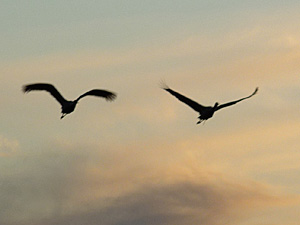
Of COURSE you want to know more about my family. We go WAAAAY back. My ancestors danced in Eocene swamps 40 to 60 million years ago, and we're still dancing today. Our dances are are one of the things we're most famous for—that and our songs that fill the night sky. We're monogamous--well mostly monogamous. Every family has a few troublemakers. Each page in this section of the Garden is dedicated to one of my close relatives.
I'll tell you more in the pages that follow, but first I have to clear up one unfortunate error made by people who don't know us well . . .
We Are NOT Herons!!!
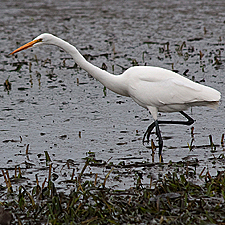
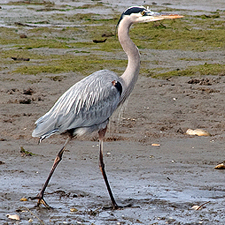
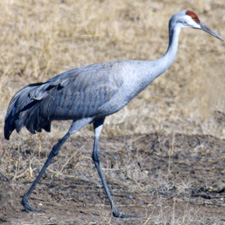
Everyone keeps confusing us with these commoners. I don't see it myself. Yes, they are tall wetland birds, so they are distant relations. But you have some marmosets and gibbons who are closer to you than the herons are to us. We're not even in the same order, let alone family! On the left, you see my brother, a Sandhill Crane (Grus canadensis—like me), walking through a field. The fellow in the middle is a Great Blue Heron (Ardea herodia) and the one on the right is a Great Egret (Ardea alba). It's really not that hard to tell us apart once you know what to look for. We're more muscular for one thing--they're a little scrawny. We also have decorative bustles, which are actually formed by our wing tips, not our tails. And you're never going to catch any self respecting members of the crane family sitting in trees like those silly herons. But one of the biggest differences is most evident when you see us in the air.
Herons Fly Funny!
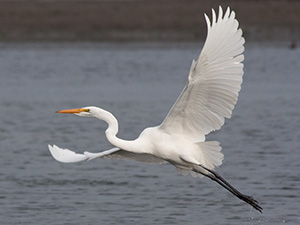

Heron necks are long, and admittedly graceful, but their delicacy comes with a price. When they fly, the herons have to curl their necks to support their heads. Look how silly that looks!
Crane Flight is Elegant
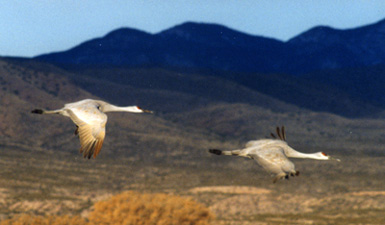
We have stronger necks, so when we take to the sky, we stretch out in all our glory.
To learn more about my family, explore the pages in the Grus section here in Grus Garden. You should also visit these sites: